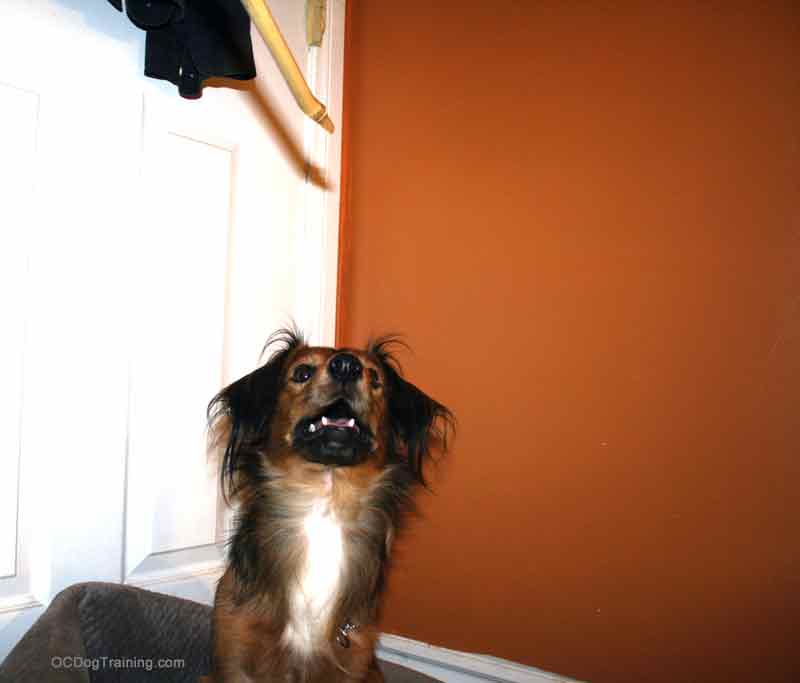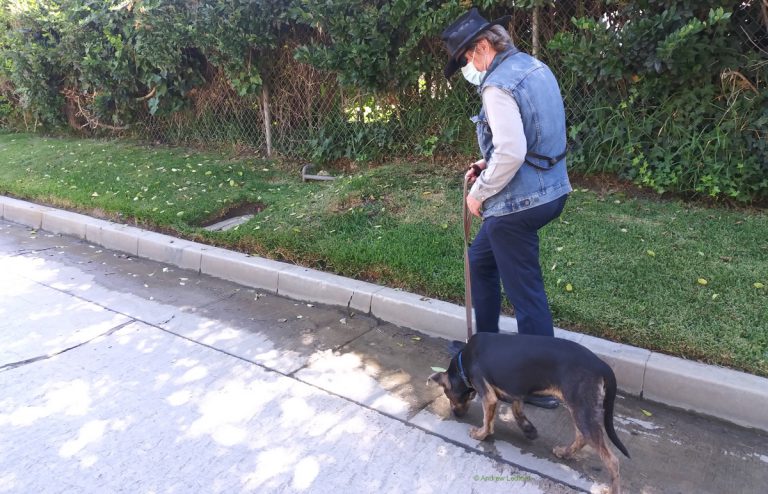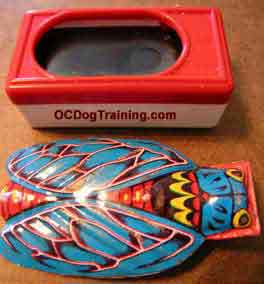Beginning Target Stick Conditioning With Clicker Video Baby Boomer Dog Handling
Beginning Target Stick Training Video
Using a target stick for dog training isn’t only for Baby Boomers. However, as I get a little older I find it mighty helpful for training small dogs. You may ask, helpful for what? Well when training small dogs bending over hundreds, even thousands of time a day can get tiresome. Bending in itself isn’t so bad, but moving a small dog around while bending can put extra strain on one’s back. The target stick lets you move or lure the dog without bending.

A lot of trainers see slip collars on most of the dogs in my videos and think I don’t use positive reinforcement. Well the slip collar is there for safety. A high quality slip collar is the safest collar for an urban environment.
Conditioning your dog to the target stick is most easily done using a clicker. Yes the little dog from Long Beach is back for some additional training. In the beginning part of the video I’m getting the dog to touch the stick at the very end. That is the target. I usually start this training very informally. As you will notice while the dog is on its bed. Once the dog is comfortable with touching the stick inside the house we’ll move to the backyard. The backyard training is not in the video. Then we go out into public. Training in public and around distractions adds a whole new dimension to the exercise and needs to be done at a speed that is right for the individual dog. Don’t go too fast. When transitioning to public training it’s better to over train with low level distraction than go too fast.
While I don’t usually talk a lot about clicker training I have been using a clicker before it was popular. When I first started doing clicker training they were call party crickets or party clickers. You had to buy them at toy stores. I think I still have a few of those lying around somewhere. My Labrador Retriever who was in television commercials and film was trained with a clicker. That dog was trained with an all positive approach for about the first three years I had him. We would work between two to four hours a day training new and basic behaviors.
Although I don’t call myself a clicker trainer I have developed specific techniques for handling a dog while using the clicker. I am amazed that a lot of trainers who claim to be clicker training experts have not done the same. How do I know they haven’t? Well I don’t really. However, when I work with clients who have done training with one of these clicker experts and they can’t handle the clicker and the leash or the dog at the same time, I have to wonder. Usually I will ask specifically about what kind of handling was taught, assuming they just need a prompt to remember. Often all I get is “I wasn’t taught that.”
As I mentioned Baby boomers aren’t the only ones who can benefit from using a target stick. Some sensitive dogs do better when they’re at a distance from people. For these dogs the stick can be a helpful intermediate step. The target stick is just one tool to help work thorough training problems or speed up the training process. There are some trainers who really like using a target stick and they have built whole target stick training systems. This can have some benefits. I have used different types of sticks, wands, staffs, canes, scepters, and wooden swords as training tools for years. When used with positive reinforcement and/or as positive reinforcement (something the dog likes) these tools can have a positive and dramatic impact on a dog’s behavior.
Wishing you the best in dogs and in life,
Andrew Ledford
So Cal Dog training
714-827-4058


